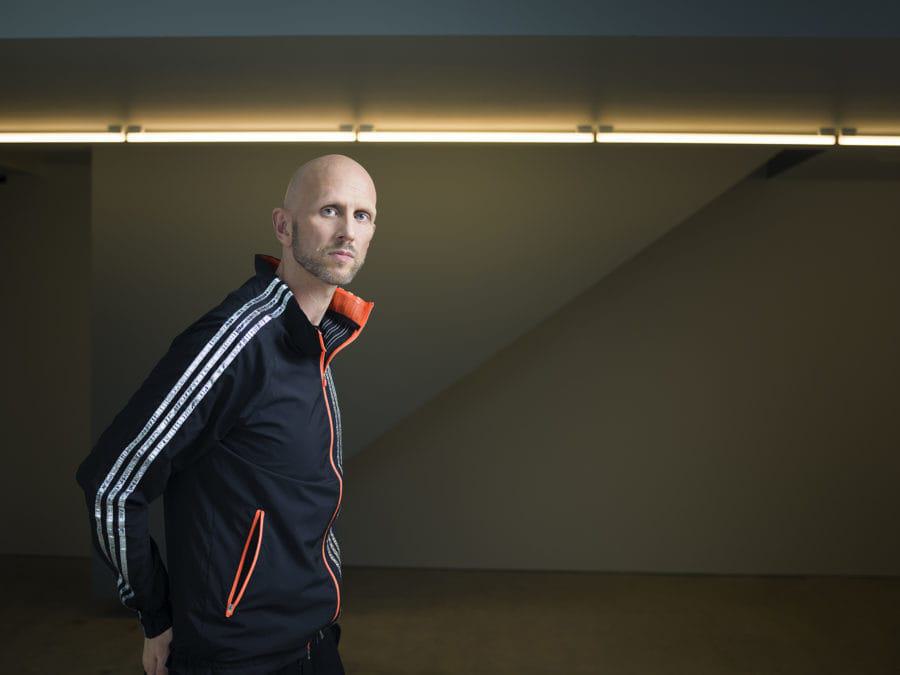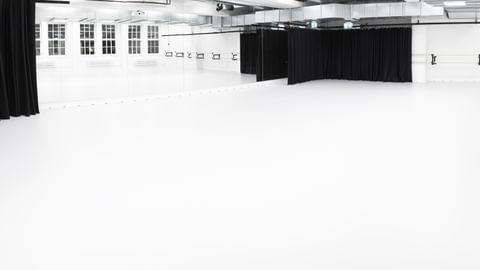
Praise for leaky boundaries: interview with Wayne McGregor
Praise for leaky boundaries: interview with Wayne McGregor
ArticleBoundary-breaking top choreographer Wayne McGregor’s work makes bodies think – about everything ranging from AI to literature.
Wayne McGregor has just returned home from Italy, where he was planning the Venice Dance Biennale, for which he is the director, and rehearsing two works for the esteemed La Scala Theatre Ballet in Milan.
Just a regular work week for one of the most sought-after choreographers in the world.
The hype and hurry has been going on for decades. In addition to the dozens of works created for his own Company Wayne McGregor dance group, McGregor’s choreography has wowed audiences in the programmes of the most famous ballet, theatre and opera houses in the world. McGregor works as resident choreographer at the Royal Ballet in London. He has also contributed as a choreographer to the Fantastic Beasts and Harry Potter films as well as to music videos by Radiohead and The Chemical Brothers.
For McGregor, who is at the top of his career, dance means more than just the refined movement language used in art and entertainment. Corporeality, and therefore dance as well, are tightly linked with other aspects of life. This is why one must constantly reach across borders and inject dance into the rest of the world. Over the past years, McGregor has been developing, for example, choreographic AI and machine learning with Google.
“It is important to me that dance and physical intelligence are involved in these discussions from the start”, McGregor states.
McGregor’s works are praised for their scope and often utilise innovations in science and technology. However, the creative spark can also be found in, for example, centuries-old literature. The multi-award-winning choreographer has realised works based on Dante Alighieri’s Divine Comedy and the writings of Virginia Woolf.
“You never know what will spark creativity. You must remain open and curious. You need to develop a beginner’s mind”, he describes.
You need to cherish the right kind of conditions to enable creativity – and create favourable conditions for failure, too. McGregor’s working process does not view failure as a bogeyman but almost as a goal.
“The closer you get to the complete breakdown of an idea, the closer you are to a possible breakthrough”, he says.
“Creativity usually strikes when you make a mistake. Then you make another mistake, and another, and another, until at some point you create something original.”

A spectacle by three master artists
Helsinki Festival will feature two works from McGregor’s enormous repertoire: the delicate installation Future Self and the contemporary ballet spectacle Tree of Codes. The unabashedly ample Tree of Codes combines McGregor’s thinking and movement language with the visual world of contemporary artist Olafur Eliasson, best known for his large-scale installations, and the electronic music of musician and producer Jamie xx.
Hailed as revolutionary, unprecedented and dazzling, the rich work’s overlapping and parallel ideas and parts crystallize McGregor’s approach by reminding us that a dance piece is never just about dance.
Even the foundations of Tree of Codes branch into other fields of art. The work is based on the book by the same name by Jonathan Safran Foer, which in turn was inspired by Bruno Schulz’s novel Street of Crocodiles. Foer used parts of the original text; the rest he “cut” from the book so that the pages of this sculptural work contain text and holes.
“Foer’s book has a body of sorts”, McGregor says. “It challenges the reading experience. While reading it, I felt that translating the work into the language of dance, images and sound would be phenomenal.”
McGregor, Eliasson and Jamie xx worked on the framework of Tree of Codes together for three years. Foer’s book burrows into the texture and rhythm of the work in many ways.
For example, McGregor says that he choreographed every single page of the book, sometimes using the literal meaning of the text, sometimes the layered spaces and atmospheres of the book.
In turn, Jamie xx utilised algorithms that turn text into sound in his composition work. Eliasson drew on the idea and structure of the peculiar book when designing a changing space, for example, using mirrors to obscure the boundaries between the performers and audience.
McGregor himself considers Tree of Codes a special piece, above all, because of its playfulness and overlapping sensory stimuli.
“I love how the boundaries and edges of the piece leak so that it is impossible to categorise the experience. It feels like a synesthetic event that blends sensory perceptions.”
Waking the sleeping senses
McGregor likes to talk about breaking not only boundaries but also habits – in the work of a choreographer as well as in life in general. He stresses that our bodies and senses know much more than we make note of in our everyday life. You have to challenge physical conventions to keep the body awake.
“Many people notice their body only when something goes wrong, they break their arm or have a heart attack. Otherwise the body just is and works without us paying it any attention.”
As his own first physical inspiration McGregor names John Travolta dancing in the late-1970s films Grease and Saturday Night Fever. Physical intelligence is not limited to just those people who work with their bodies, McGregor reminds us. Or it should not be limited.
The choreographer rejects the claim that technology alienates us from our bodies. Quite the opposite: the newest technology can open up different kinds of paths to our mundane existence. He talks about the potential of the metaverse to “recalibrate” our sleeping senses.
“Interactive games, virtual reality and augmented reality encourage our bodies to do things they would not otherwise do. They take our senses and movements beyond functionality”, he says.
Excited by bodily technology, McGregor thinks that the story of humankind and AI has only just begun. The intelligence of the body, the human special ability to think with the body, has not been replicated.
“We humans can read each other emotionally, intellectually and intuitively, to interpret gestures and modify our behaviour accordingly. We have a special genetic ability to notice even the smallest details in one another”, he describes.
It is about interaction but also about playing and experimenting, innate creativity.
“We all have this same tool. We should learn to play with our bodies much more.”
The interview is written by Helsinki Festival.
Helsinki Festival will feature the contemporary ballet Tree of Codes by Wayne McGregor, Olafur Eliasson and Jamie xx as well as the installation Future Self by Company Wayne McGregor and Random International.






